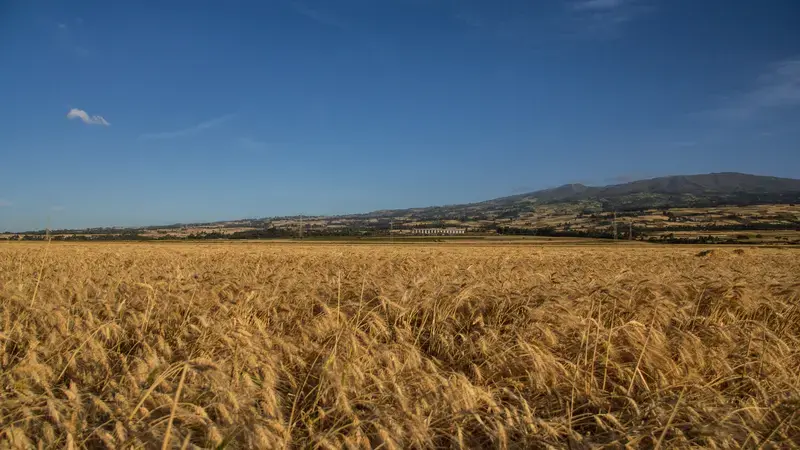Breeding wheat resilience
Published Date
November 09, 2016

Breeding resistant wheat varieties offers a practical defense against the effects of climate change – helping to maintain productivity and strengthen food security despite increasing water scarcity, higher temperatures, and the emergence of new pests and disease.
Advanced crop science offers one of the most effective ways of dealing with the vagaries of climate change. ICARDA scientists apply modern breeding techniques to integrate new target traits into crops and help resist climate-induced stress – from water scarcity to extreme temperatures and the emergence of new pests and diseases.
Durum wheat is a strategic crop across many dryland areas worldwide. Although it is regarded as one of the most drought-tolerant cereal crops, it is often cultivated on marginal lands with poor soils and limited water, and can be negatively impacted by high temperatures and drought.
These problems are compounded by the fact that many smallholder farmers do not have the capacity to adapt to these environmental constraints through the application of expensive technologies such as supplemental irrigation.
Breeding ‘climate-ready’ crop varieties
A more practical adaptation strategy, then, is the adoption of drought and heat-resistant wheat varieties, combined with proven agronomic practices such as conservation agriculture. ICARDA breeders and agronomists work side-by-side to identify and accumulate useful genes that can be integrated into seed DNA – creating climate-ready crop varieties.
Exposing germplasm to environments with varying levels of drought and heat enables breeders to select candidate varieties capable of maximizing water productivity and helping farmers to earn ‘more crop per drop.’ Heat stress tests include sowing varieties in January so they are exposed to intense heat in May, and analyzing resistance in wheat varieties grown under plastic tunneling where temperatures can be raised by up to 6 degrees Celsius.
In 2015, an ICARDA cross was submitted to the variety catalog in Morocco, and during the past three years it has consistently out-yielded the most productive commercial wheat varieties by at least one ton per hectare (t/ha) – even under the most severe drought conditions.
Combating the effects of pests and disease
The emergence of pests and diseases in new areas due to climate change also requires a response. Top-yielding elite varieties are extensively combined with primitive wheat and landraces, which provide unique types of germplasm that have co-evolved with pests and developed special genes for protection. Germplasm is then exposed to several environments – each presenting a different set of pathogens and races, with levels of resistance closely recorded to identify resistant genes and combine them into durable varieties.
A quantitative trait locus study of the ICARDA wheat variety ‘Sebatel,’ for instance, revealed that its resistance to leaf, stem and stripe rusts was due to three major and five minor genes combined. Such superior varieties offer farmers a best-bet strategy: raising yields against a backdrop of higher temperatures and increasing water scarcity, while reducing the need for costly and unsustainable fungicides and pesticides.
